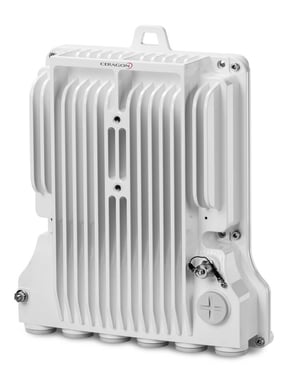Universal multicore microwave radio for all deployment scenarios

OVERVIEW
The world’s best all-outdoor microwave radio just became better. The IP-50C universal microwave radio is the evolution of the IP-20C, the world’s best-selling wireless backhaul outdoor radio. The IP-50C brings new capabilities that allow you to base your entire network, from small cells to massive aggregation sites, on this single radio – reducing complexity, costs and time to revenue.
The IP-50C can be deployed as a stand-alone all-outdoor radio, or combined with an indoor unit (the IP-50FX) as a scalable aggregation node and cell site router. Either way, you can leverage all the benefits of Ceragon’s cutting-edge multicore technology.
A unique configuration of an all-outdoor 4+0 node (utilizing layer-1 carrier aggregation) allows you to achieve up to 8Gbps by layer-1 carrier bonding without a need for an additional indoor unit. Moreover, using the IP-50C, you may upgrade your existing all-outdoor installed base (whether Ceragon IP-20C 2+0 or any third-party all-outdoor) into 4+0 using layer-1 carrier bonding. This enables you to turn more sites in your network into all-outdoor sites, thereby reducing time to market, lowering CAPEX and OPEX, and simplifying site acquisition tasks.

.jpg?width=188&height=94&name=WB_Macrocell_connectivity_BLG_Aug20_Twitter%20(1).jpg) 5G Macrocell Connectivity- a Flexible Approach
5G Macrocell Connectivity- a Flexible Approach
 The Multidimensional Challenge Curves of 5G
The Multidimensional Challenge Curves of 5G
.jpg?width=142&height=94&name=Expanding-innovation-paths-with-disaggregation2%20(1).jpg) Expanding Innovation Paths with Disaggregation
Expanding Innovation Paths with Disaggregation